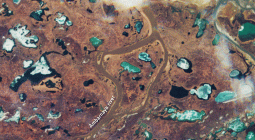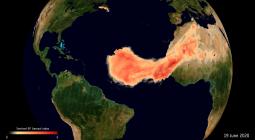Italy partners with Kenya on a mission to observe the earth
During a press conference in Milan, on Sunday, Adolfo Urso, Minister of Enterprise and Made in Italy, said that Italy would be partnering with Kenya on a space project. He made the revelation on the eve of the 75th International Astronautical Congress (IAC). This project had been tabled earlier this month, when the minister visited Kenya.
The Minister revealed that Italy is looking to utilize one of its space centers in Kenya, which is managed by Italian space agency ASI, to launch earth observation satellites in a few years from now.
The minister, according to Reuters, revealed that the space center would also be used for the training of Kenyan students, industry experts and scientists.
The Italian minister noted that the re-launch of the space center, scheduled in a few years, was a goal for both the Italian and Kenyan governments, which would be under Rome's Mattei Plan, an Italian development program for African countries.
The 75th International Astronautical Congress (IAC), which will take place in Milan from October 14 to 18, 2024, will include over 8,000 specialists from business, research, and institutions.
Earlier in the month, at the Luigi Broglio Malindi Space Centre in Malindi, Kenya, Soipan Tuya, the Cabinet Secretary for Defense for Kenya, and Adolfo Urso, co-chaired the 2nd Council of Ministers Meeting.
There, they addressed expanding the implementation of the bilateral agreement between Kenya and Italy regarding the space center, as reported by Space in Africa.
“Over 60 years ago, Italy’s space adventure began here in Malindi. Today, we want to give a new mission to this base, which could become the training center for space operators from African countries that have just established their continental space agency,” the Italian minister said at the time, after which the Luigi Broglio Space Museum was inaugurated.
The Luigi Broglio space facility is located 30 kilometers (19 miles) north of Malindi and began operations in the 1960s. Its latest launch was in 1988.
Following the first Italian satellite launch from Wallops Island in 1964, the second Italian satellite, the San Marco-2, was launched from the S. Marco platform in Malindi, Kenya in 1967 (17 launches total, up to 1988).
The center is divided into two sections: the ground segment (35.00 sqm), which provides scientific and technical services (antennas for in-orbit control (satellites/launchers) and scientific data collecting), and the sea portion (5 platforms), which employs 200 locals.
According to the Kenyan Space Agency, the Luigi Broglio Space Centre (Malindi Centre) primarily houses ground station equipment that transmits and receives signals from various space systems utilized in specialized missions.
Cover photo: Italy partners with Kenya in a mission to observe the earth




